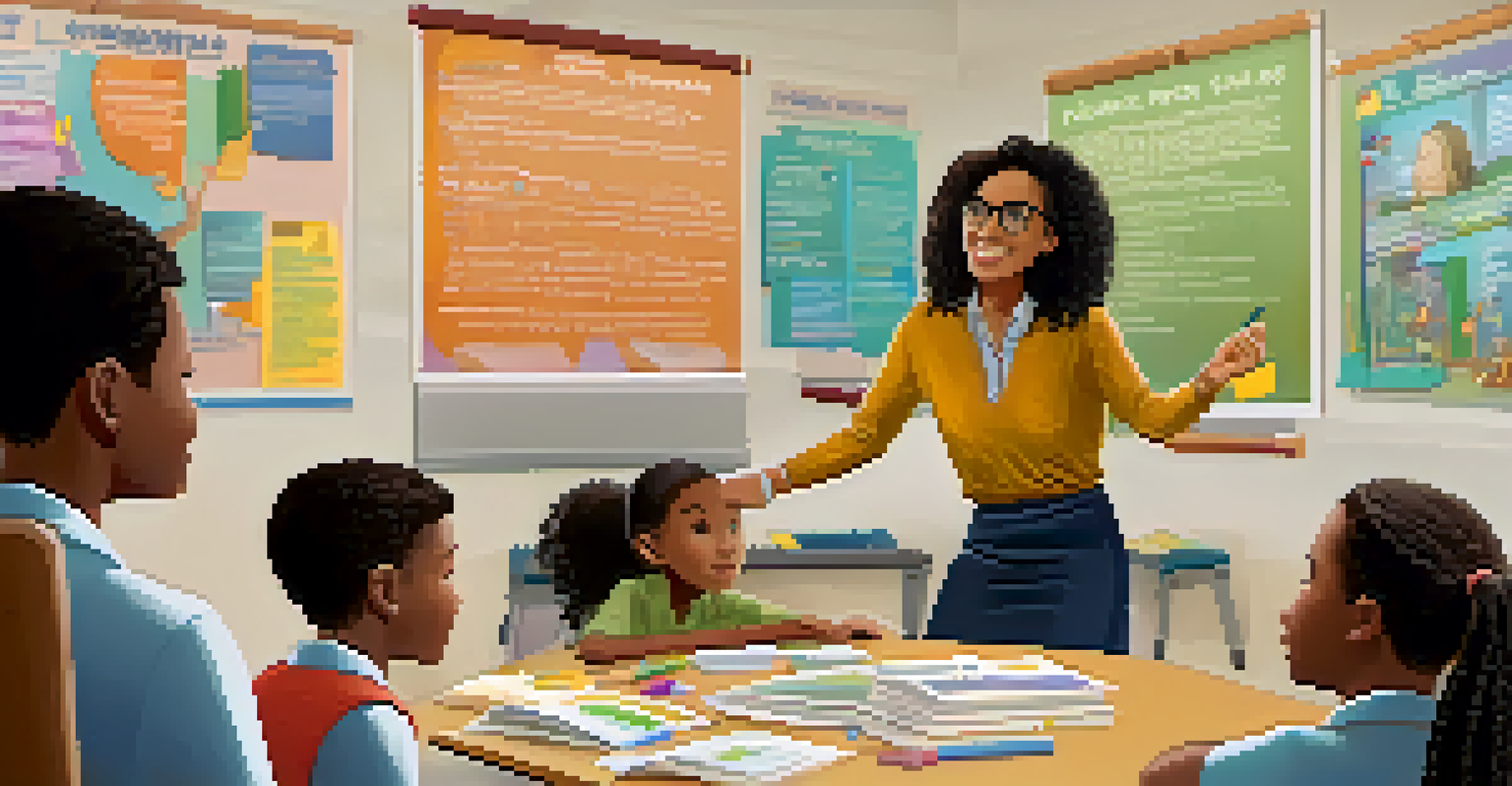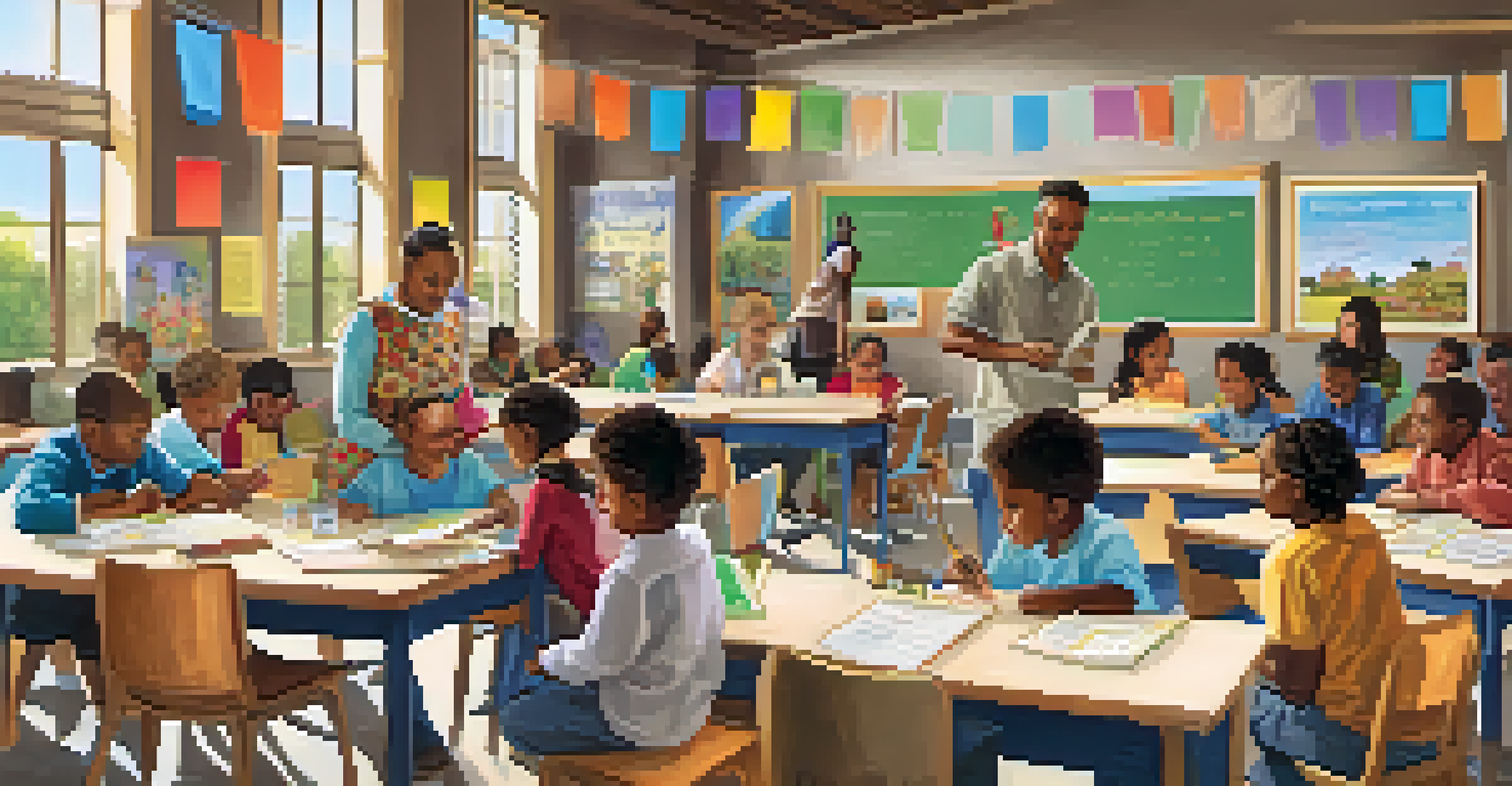Creating Inclusive Adaptive Learning Experiences for All

Understanding Adaptive Learning and Inclusivity
Adaptive learning refers to educational methods that adjust to the needs of each learner. By tailoring content, pace, and style, adaptive learning creates a personalized experience. Inclusivity in education means ensuring that every student, regardless of background or ability, has equal access to learning opportunities.
The future of education is not about the technology, but about the human connections we create through it.
When we combine adaptive learning with inclusivity, we create environments where all students can thrive. This approach not only helps students with disabilities but also supports diverse learning preferences among all learners. It's about meeting each student where they are and guiding them on their unique learning journey.
For example, a student who struggles with reading can benefit from audio versions of texts, while another might prefer visual aids. By recognizing these differences, educators can foster a more engaging and effective learning experience for everyone.
The Importance of Universal Design for Learning (UDL)
Universal Design for Learning (UDL) is a framework that helps educators create flexible learning environments. It emphasizes providing multiple means of engagement, representation, and action/expression for students. UDL ensures that lessons cater to a variety of learning styles and needs.

By incorporating UDL principles, educators can design courses that are accessible and motivating for all learners. This might include offering choices in assignments or using technology to support different learning modalities. The goal is to reduce barriers and enhance learning for everyone.
Personalized Learning Enhances Inclusivity
Adaptive learning tailors educational experiences to meet the diverse needs of all students, promoting engagement and effectiveness.
Imagine a classroom where students can choose between writing an essay, creating a video, or giving a presentation to demonstrate understanding. This not only empowers students but also encourages them to take ownership of their learning.
Leveraging Technology for Adaptive Learning
Technology plays a crucial role in creating adaptive learning experiences. Tools like learning management systems and educational software can analyze student performance and adjust content accordingly. This allows for real-time feedback and personalized learning paths.
Inclusion is not a matter of political correctness. It is the key to growth.
For instance, platforms like Khan Academy use algorithms to adapt lessons based on a learner's strengths and weaknesses. Such tools can highlight areas needing improvement while providing resources tailored to individual needs. This kind of adaptability is essential for inclusive education.
Moreover, technology can also facilitate collaboration among students, allowing them to learn from one another. When students work together using these tools, they can share diverse perspectives and support each other’s learning journeys.
Assessing Learner Needs and Preferences
To create an inclusive adaptive learning experience, it's vital to assess the needs and preferences of learners. This may involve surveys, interviews, or informal observations to understand how students learn best. Gathering this information helps educators design more effective and personalized lessons.
For example, a teacher might find that some students prefer group work while others excel in independent tasks. By recognizing these preferences, educators can provide a balanced mix of activities that cater to diverse learning styles. This not only boosts engagement but also fosters a sense of belonging.
Universal Design Supports All Learners
Implementing Universal Design for Learning (UDL) principles ensures that lessons are accessible and motivating for various learning styles.
Additionally, ongoing assessments allow educators to adjust their teaching strategies as needed. By staying attuned to student progress and feedback, they can continually refine their approach to meet evolving needs.
Creating a Supportive Learning Environment
A supportive learning environment is essential for fostering inclusivity and adaptability. This involves not only physical space but also emotional and social support. Students should feel safe and valued in their learning community to thrive.
Encouraging collaboration and open communication among students can help build this supportive atmosphere. When learners feel comfortable expressing their thoughts and challenges, they are more likely to seek help and engage with the material. This peer support enhances the learning experience for everyone.
Moreover, providing resources such as counseling services or tutoring can further support students facing challenges. By addressing both academic and emotional needs, educators can help create a holistic learning environment that promotes success for all.
Involving Families and Communities
Involving families and communities in the learning process is key to creating inclusive experiences. When educators partner with families, they gain valuable insights into students' backgrounds, strengths, and needs. This collaboration can enhance the support system around each learner.
For example, hosting workshops or informational sessions for parents can help them understand how to support their child's learning at home. Additionally, community organizations can provide resources or mentorship opportunities that enrich the educational experience. This collective effort fosters a more comprehensive support network for students.
Community Involvement Boosts Success
Engaging families and communities in the educational process creates a supportive network that enriches student learning experiences.
By engaging families and communities, educators create a shared responsibility for student success. This not only strengthens relationships but also enriches the learning experience through diverse perspectives and resources.
Continuous Improvement Through Feedback and Reflection
Creating inclusive adaptive learning experiences is an ongoing process that requires continuous improvement. Gathering feedback from students, parents, and educators can provide valuable insights into what’s working and what isn’t. This reflective practice allows for the refinement of strategies and approaches.
For instance, conducting regular surveys or focus groups can help identify areas for improvement. When educators actively seek input, they demonstrate that they value the perspectives of all stakeholders. This not only enhances the learning experience but also fosters a culture of collaboration.

Moreover, staying informed about the latest research and best practices in education can guide educators in their efforts. By embracing a mindset of growth and adaptability, they can create a more inclusive learning environment that evolves to meet the needs of all students.